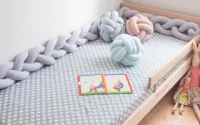The Benefits of a Cold Drawing Machine
Cold drawing is a process that manipulates steel to reduce its size. It involves spooling the steel and pulling it through a series of dies that change its shape. The process requires precision and can make the steel stronger and less brittle.
It is important to know the dependence of tensile strength and yield strength on cold working. This can improve mathematical modeling of the drawing process.
Precision
Unlike hot-formed steel products that warp as they cool, cold-drawn metal stays flat. This helps achieve precise size and roundness tolerances that eliminate costly, time-consuming machining operations. The process also reduces the number of machine steps, making it more efficient for your company to produce finished parts.
The first step in the cold drawing process involves submerging the raw steel bars in a lubricant. This allows the metal to slide more easily through the dies. The next step is pointing, where several inches of the lead ends are reduced in size to allow them to fit through the dies.
Once the pointing process is complete, the bar or rod goes into the drawing machine. Here, the lubricant helps to shape the metal into whatever your company needs it to be. Then, it is rewound as drawn wire.
Durability
The motors used on drawing machines must be specially constructed to withstand the harsh duty and physical environment. They must have sufficient internal windings to handle voltage spikes from the AC drive and separately powered cooling fans to provide adequate cooling throughout the speed range. Ventilated motors are preferred, as they allow for quick changes to the die cassette and allow for more accurate control of the wire diameter.
Cold drawing improves the machinability of hot-rolled steel, allowing it to be used in a variety of applications. It also helps to reduce the thickness of the metal. The process also gives the metal a bright finish and increases its strength.
Metalworking companies begin the process by submerging the raw steel bar in lubricant. This lubricant allows the steel bars to pass through the dies more easily. It also prevents the bars from damaging the machine. The steel bars are then pickled to remove mill scales and iron oxides, preparing them for the next step of cold drawing.
Flexibility
Drawing machines are used for a wide range of metal bars and tubes. This process reduces their cross section and changes their shape. These machines can also produce a variety of different profiles and tolerances. In addition, cold drawn profiles have a high degree of ductility and can be shaped to meet specific requirements.
The process begins with submerging raw steel in a lubricant. This lubricant helps the steel bar pass more easily through the dies. The lead ends are then sharpened to a pointed shape. This is necessary to make the wires fit through the dies, which are smaller than the original bar or coil section.
Modern drawing machines have many improvements over the old ones. For example, they allow for accumulating wire on a single block, rather than using multiple sheaves. This improves performance and eliminates sheave slippage, which increases the chances of scratching the wire. Also, modern drawing machines have switched to digital motor drives. This allows a single pair of data wires to carry hundreds of control signals.
Maintenance
While a Cold drawing machine is an expensive investment, the proper maintenance and care of the equipment will increase its value over time. This includes keeping the lubrication system in good working order, checking that no unqualified raw materials enter the equipment and cleaning and polishing the tower wheel.
Some companies manufacture machines with capstans that are mounted on horizontal shafts, which reduces the operator’s need to lean over or crawl under the machine for string-up. They also are better for larger diameters and higher carbon steel than limited-stroke dancers, which require the operator to string up by a vertical shaft.
In addition to the basic operator controls, some machines have a personal computer display with full-color, bar graph style data presentation options for production information (inlet/outlet wire diameter and customer data) and machine indicators, including motor current and speed. This type of information can save valuable machine downtime by allowing trouble alarms to be emailed to the operator.


